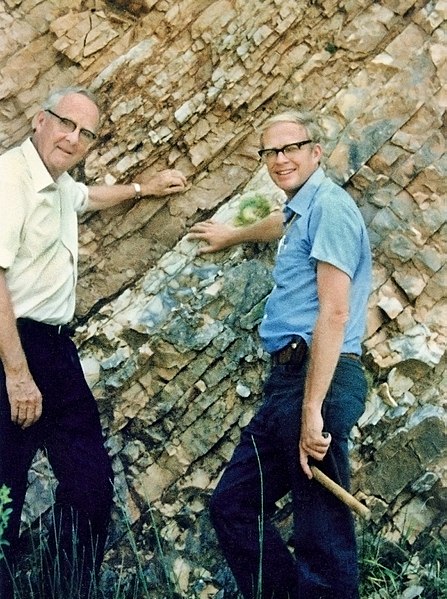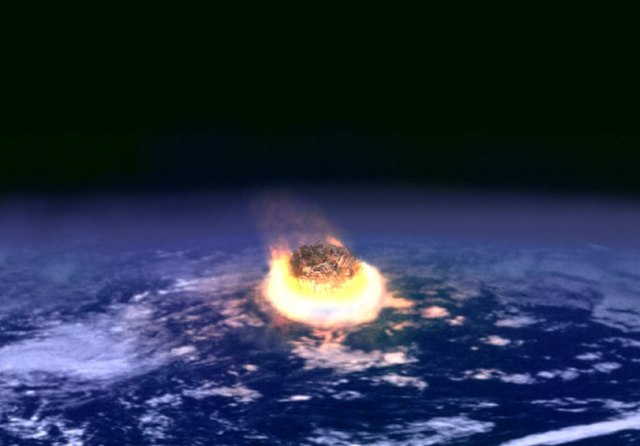The Alvarez hypothesis posits that the mass extinction of the non-avian dinosaurs and many other living things during the Cretaceous–Paleogene extinction event was caused by the impact of a large asteroid on the Earth. Prior to 2013, it was commonly cited as having happened about 65 million years ago, but Renne and colleagues (2013) gave an updated value of 66 million years. Evidence indicates that the asteroid fell in the Yucatán Peninsula, at Chicxulub, Mexico. The hypothesis is named after the father-and-son team of scientists Luis and Walter Alvarez, who first suggested it in 1980. Shortly afterwards, and independently, the same was suggested by Dutch paleontologist Jan Smit.
Luis Walter Alvarez, left, and his son Walter, right, at the K–T Boundary in Gubbio, Italy, 1981
Badlands near Drumheller, Alberta where erosion has exposed the K–Pg boundary.
The Western Ghats, a province within the Deccan Traps that has been thoroughly studied.
An extinction event is a widespread and rapid decrease in the biodiversity on Earth. Such an event is identified by a sharp fall in the diversity and abundance of multicellular organisms. It occurs when the rate of extinction increases with respect to the background extinction rate and the rate of speciation. Estimates of the number of major mass extinctions in the last 540 million years range from as few as five to more than twenty. These differences stem from disagreement as to what constitutes a "major" extinction event, and the data chosen to measure past diversity.
Trilobites were highly successful marine animals until the Permian–Triassic extinction event wiped them all out.
Badlands near Drumheller, Alberta, where erosion has exposed the Cretaceous–Paleogene boundary.
Luis (left) and Walter Alvarez (right) at the K-Pg boundary in Gubbio, Italy in 1981. This team discovered geological evidence for an asteroid impact causing the K-Pg extinction, spurring a wave of public and scientific interest in mass extinctions and their causes
An artist's rendering of an asteroid a few kilometers across colliding with the Earth. Such an impact can release the equivalent energy of several million nuclear weapons detonating simultaneously.





